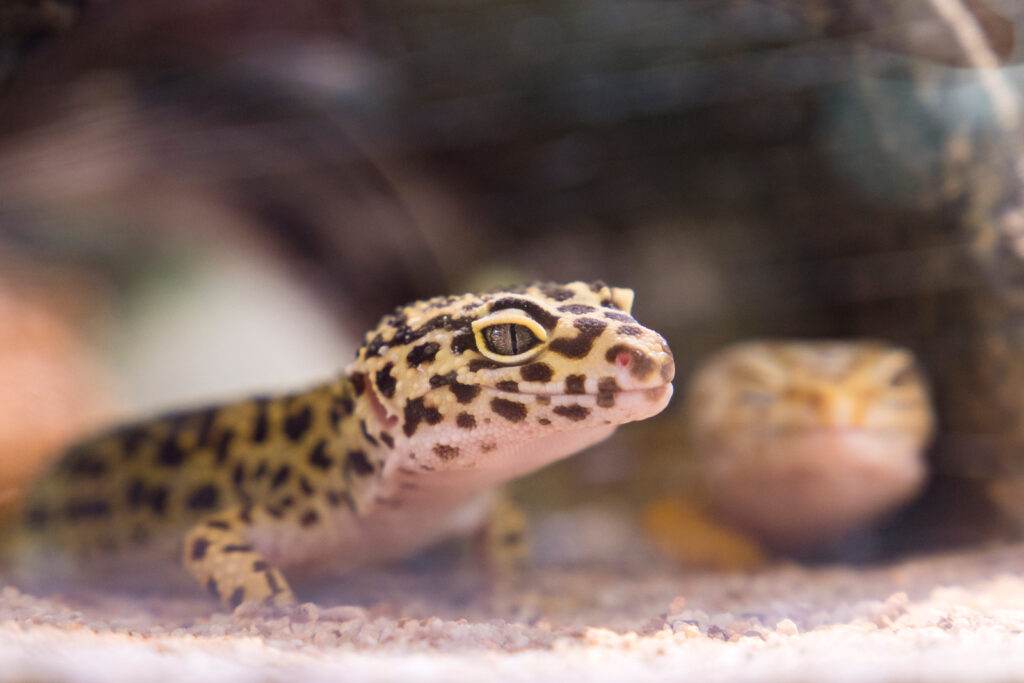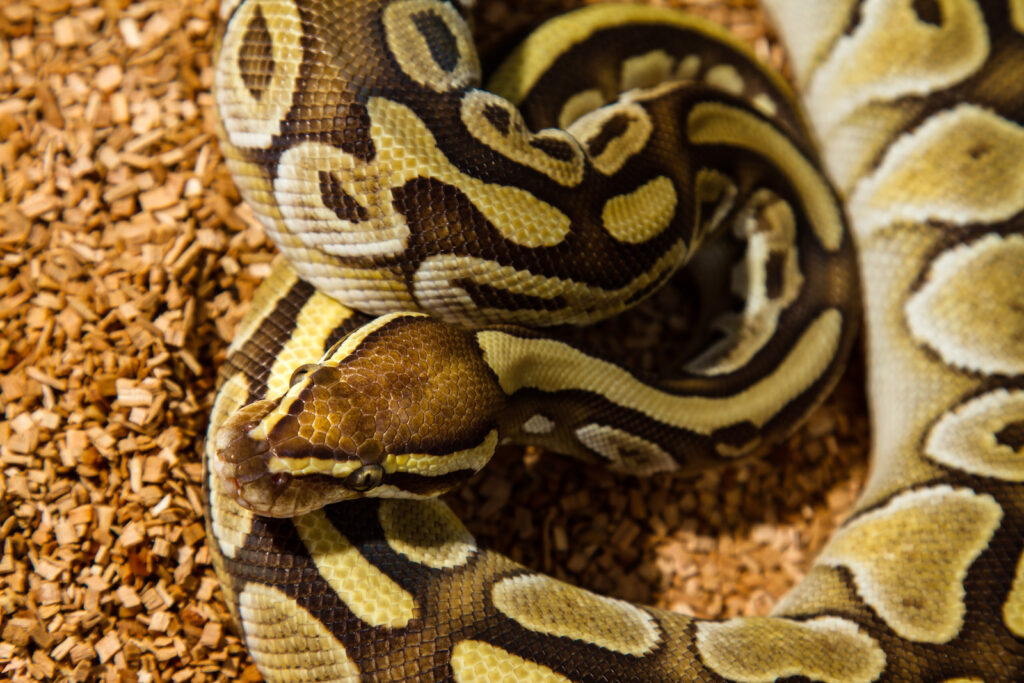…what does your pet need?
Basking in the sun can be pretty pleasant for us humans, but it’s even more important for our reptile friends! In the wild, these cold-blooded creatures rely on sunlight and heat in their environment. So when we’re keeping them in our houses, we need to make sure they’ve got the right amount of warmth and light to keep them healthy and happy.
But when it comes to heat and light sources there’s a bewildering array of choices, from basking lamps to UV lamps to heat pads. Read on to find out about heat lamps for reptiles and learn how to work out what’s best for your pet.

Why is heat so important for reptiles?
Reptiles can’t regulate their internal temperature like we can, so the heat of their bodies depends on their surroundings. If their environment is too hot they can suffer from heat stress, and if it’s too cold their bodily functions will slow down and this affects their ability to move, digest food and fight off disease.
The ideal temperature for a reptile’s environment will depend on the species and it’s important to look up your pet’s particular requirements so that you can set up their home to suit them. In general, though, many reptiles will benefit from having a temperature gradient through their home, with a warmer side and a cooler side so they can move about to regulate their body heat if they need to.
If you put a thermometer at the warm end and the cool end, you can assess the temperature gradient and make sure it’s right for your pet. You may also need to adjust the temperature so it’s cooler at night – again, check the requirements for your particular species.
In terms of heat sources, there are many heat lamps for reptiles available and some pets will benefit from heat pads as well. When you’re setting up heat sources for your reptile, remember to protect them so that your pet won’t get burnt. In the wild, reptiles aren’t used to dealing with anything as hot as a heat lamp, so they haven’t learnt to be careful!
Heat lamps for reptiles
There are loads of heat lamps out there and the right choice will depend on your pet and the enclosure they live in. Looking through all the options can be confusing, but it helps to draw a broad distinction between lamps that just produce heat and those that produce light as well.
Lamps that only produce heat include ceramic heat lamps. These tend to last a long time, and they’re a good option if you’re looking for something to provide heat at night without producing extra light that could disturb your pet’s routine.
Dual heat lamps for reptiles, on the other hand, produce light as well. Just as with heat, the amount of light that reptiles need depends very much on how they live in the wild – whether they tend to come out in the day or night and how much sunlight they would normally get.
Many reptiles like to bask in the sunshine and these creatures often benefit from basking lights which direct their beam onto a zone where your pet can enjoy soaking up light and heat like they would in the wild. Many of these basking lights produce a wide spectrum of light including UVA. In order to understand why this is important, we need to think about the different types of light that reptiles need.

What kinds of light do reptiles need?
In the wild, most reptiles are very dependent on UV light from sunlight. In fact, they can even see this kind of light, which is invisible to us humans. There are two forms of UV light that are important for reptiles: UVA and UVB.
UVA is important for wellbeing and reproductive behaviour – reptiles see in this light so their world would look strange to them without it! UVA is actually produced by some normal household lights, but special ‘full spectrum’ lights are a good source of UVA for reptiles.
UVB lamps for reptiles
The second type of UV light, UVB, is important for producing vitamin D in the reptile’s skin. This in turn helps them maintain healthy calcium levels. A deficiency of calcium can lead to health problems including bone disease, so it’s important for reptiles to be exposed to enough UVB light.
UVB isn’t produced by normal lights or ‘full-spectrum’ lights, and the UVB in sunlight will be filtered out by the glass or plastic of the vivarium. This means that reptiles who rely on UVB will need a dedicated source of this kind of light. These UVB lamps generally need changing every few months – it’s important to follow the manufacturer’s guidelines as to how often to replace them, as we can’t see the decline in UV with our human eyes! The amount of UVB light that reptiles need depends on how the species lives in the wild. Desert animals who would naturally bask lots in the sunshine will need a UVB lamp based on desert conditions, while those who spend their lives in shady rainforests will need a lamp based on tropical conditions. For certain species of snakes, the amount of UVB they need is up for debate, so it’s best to check the requirements of your particular pet and get some expert advice if you’re unsure.
Setting up heat lamps for reptiles
Once you’ve worked out what light and heat sources your reptile will need, the next thing to think about is where to put them. The best setup will depend on your pet and the layout of their enclosure, but there are a few general points to think about.
One important thing is that the amount of UVB your reptile will be exposed to declines quite rapidly with distance from the light. Usually, UVB lights will come with instructions as to the maximal recommended distance from your pet. If you’re setting up both a UVB lamp and a heat lamp for reptiles, it’s often best to place them at the same side of the enclosure so that the reptile soaks up the UVB when they’re drawn towards the heat. Heat lamps will also have a minimum distance that they should be kept from your pet’s skin to avoid burns.
Hopefully this has been a useful guide to heat lamps for reptiles! The take-home message is to set up your pet’s enclosure to meet their particular requirements for heat, UVA and UVB. If you’re in any doubt as to what’s best for your reptile friend, speak to your vet for advice.


